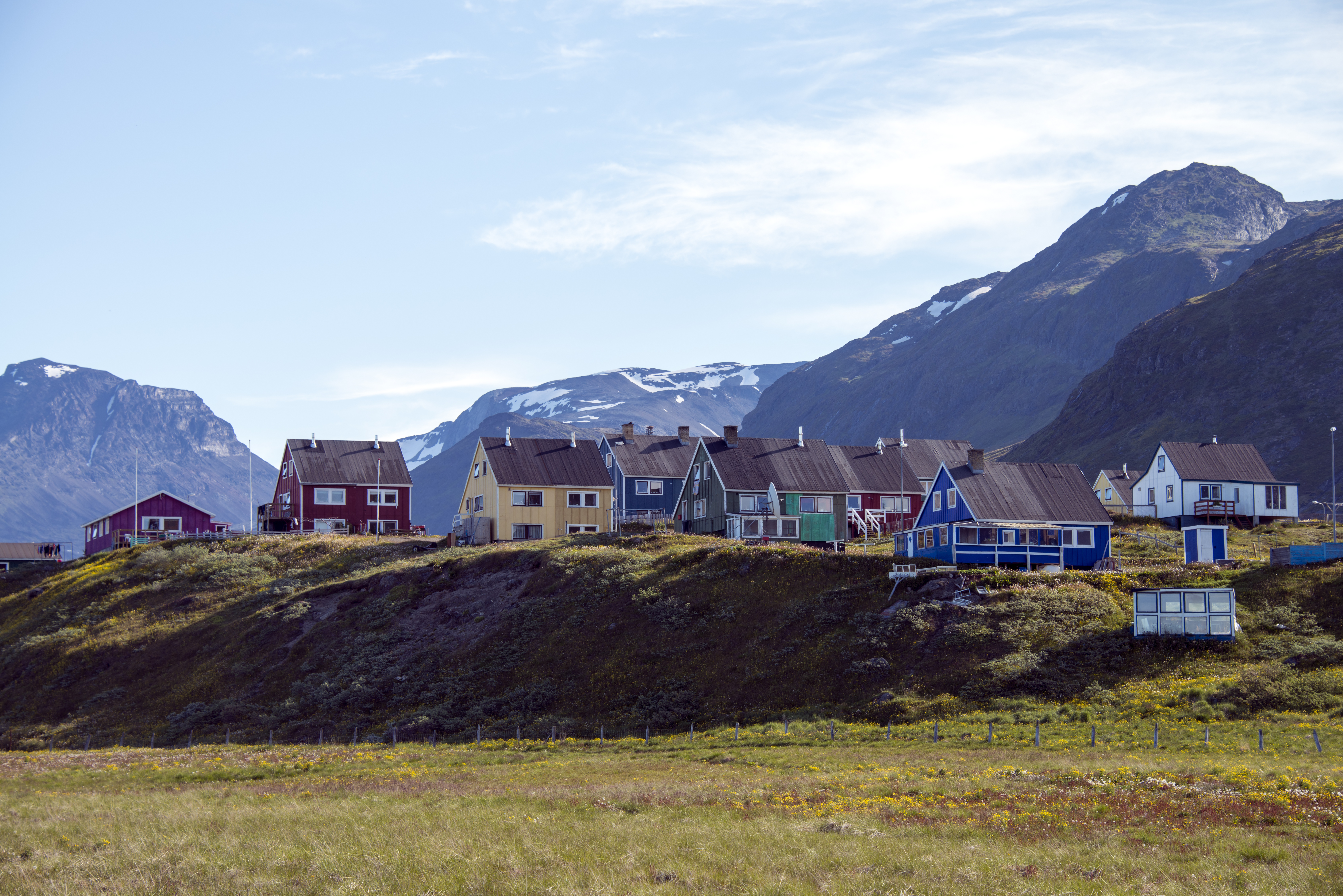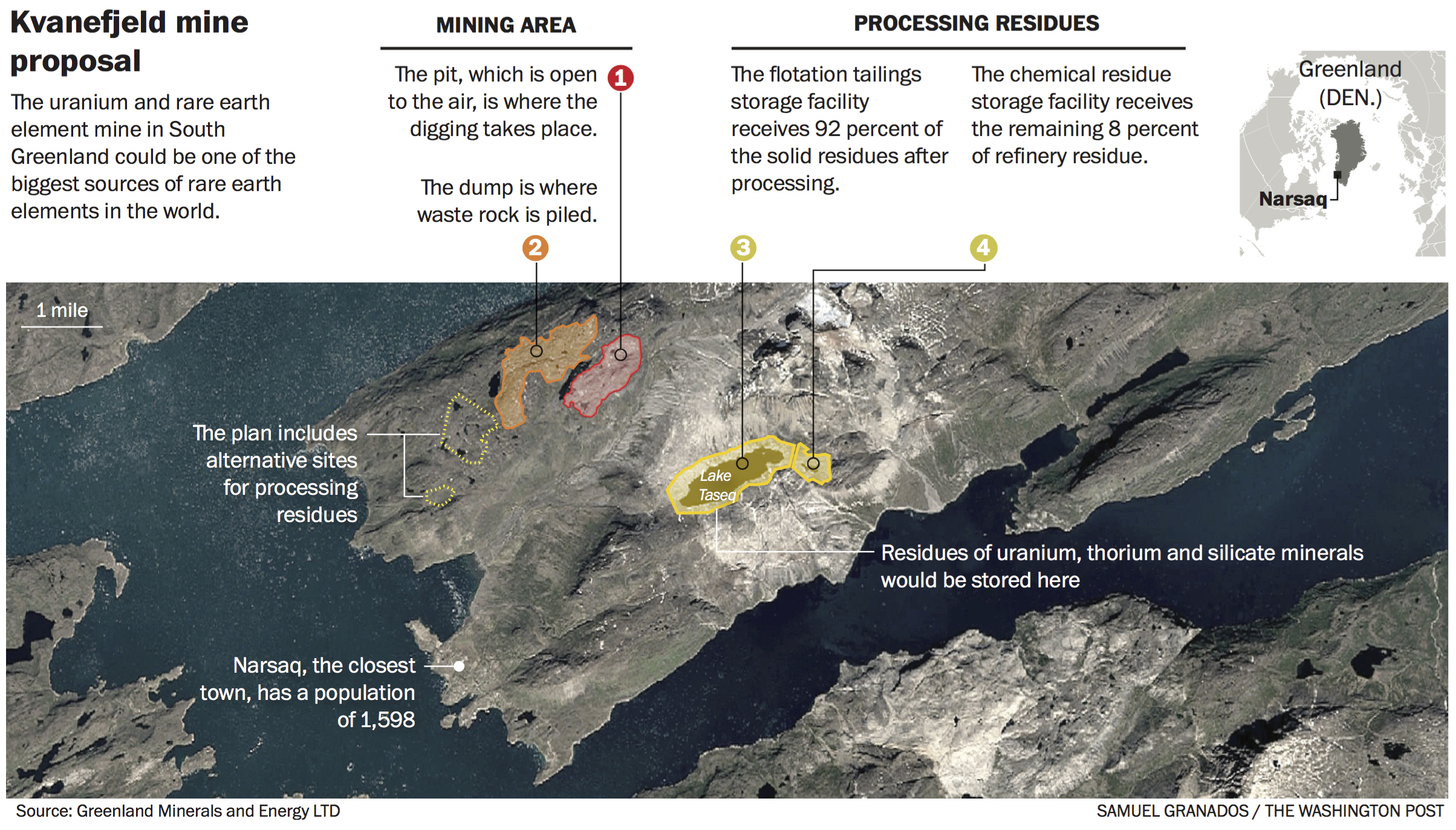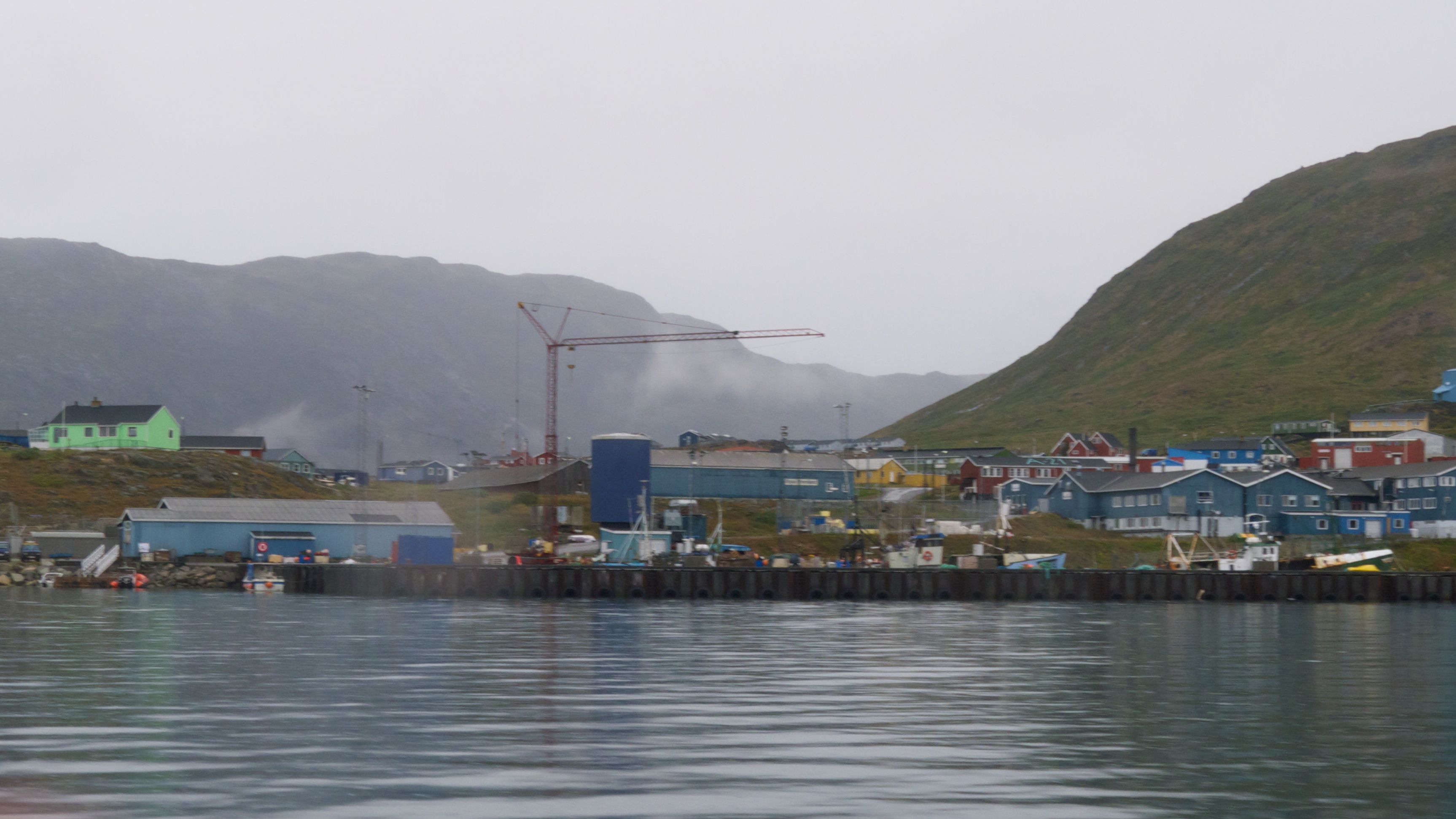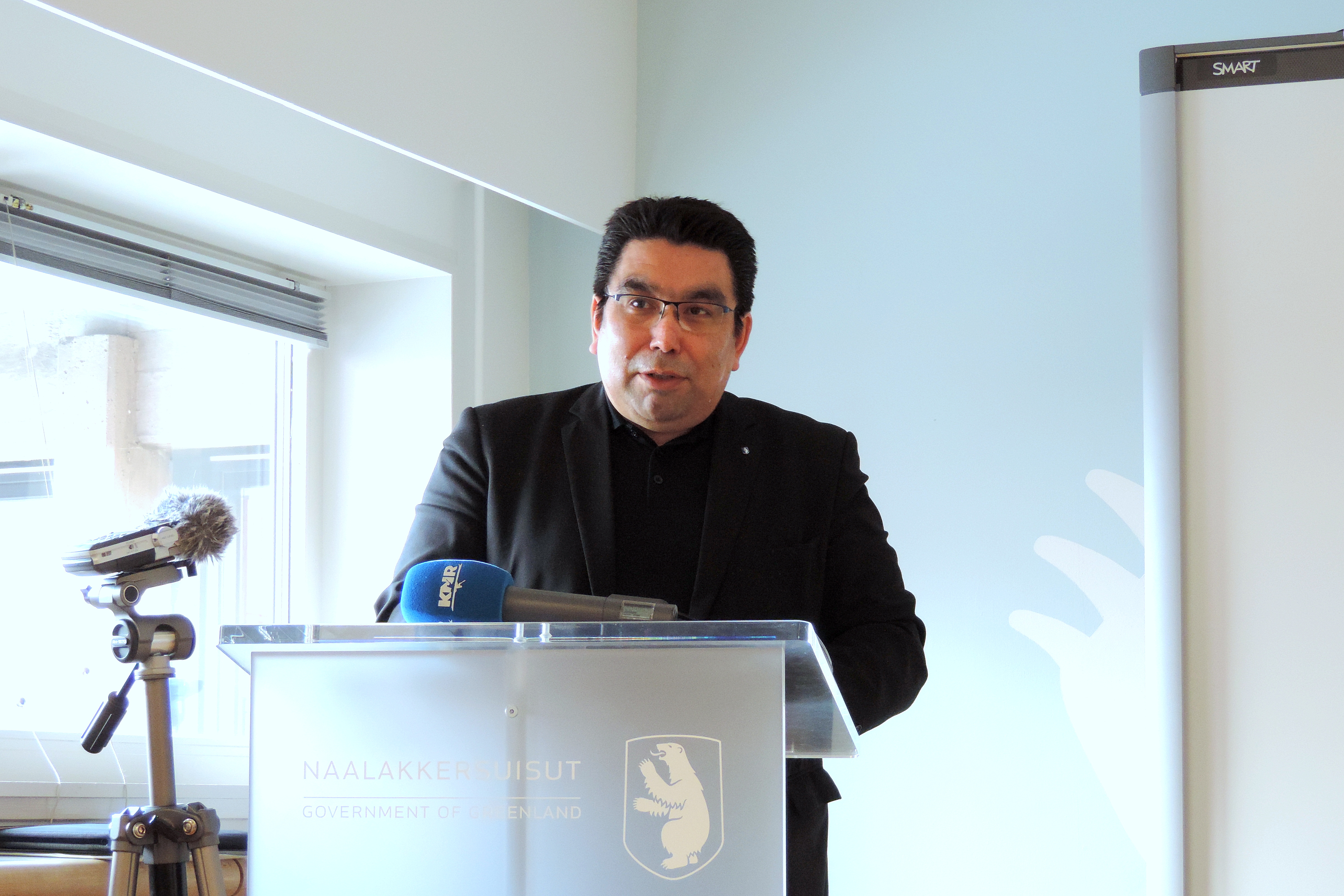Greenland needs money. Is a uranium mine the answer?

NARSAQ, Greenland — As principal of the primary school in this once-prosperous fishing town near the southern tip of Greenland, Ivalo Motzfeldt has a clear view of what unemployment and shrinking opportunity can do to families: Children arriving at school hungry and traumatized by domestic violence. Recurrent waves of suicides. Flagging motivation and stubbornly low rates of academic advancement.
Motzfeldt knows that breaking this pattern is critical to Narsaq’s future and to Greenland’s. But she passionately opposes the government’s proposed solution: an open-pit rare earth-minerals and uranium mine near town financed by a pair of Australian and Chinese mining companies. She fears that the mine will poison South Greenland’s pristine environment with radioactive waste and open the tiny nation of 56,000 to foreign meddling. “We need money, but we can’t sacrifice the land for money,” she said.
While the world focuses on the potentially disastrous effects of Greenland’s melting ice cap, Greenlanders themselves are struggling to solve a very different problem: how to tap their wealth of natural resources without inviting the environmental and political problems that have devastated other developing nations.
With a territory larger than Mexico and a population that could fit inside a football stadium, Greenland badly needs new sources of income to provide jobs and combat chronic social ills. Its economy leans heavily on one major export – shrimp – and is propped up by an annual block grant of more than $500 million from Denmark.
The question is what to do about it. Many in Greenland, including Prime Minister Kim Kielsen, view resource development as the nation’s best chance for self-sufficiency. The issue is tightly intertwined with Greenland’s fervent movement to win independence from Denmark, which began colonizing the sprawling territory almost 300 years ago. Greenland negotiated the right to self-rule in 1979 and has since built the institutions of a modern democratic society.
The next step, pro-development interests think, is to launch large-scale mining projects to jump-start a diversification of the economy. Opponents counter that courting foreign mining interests amounts to swapping one form of dependency for another, with the added risk of environmental degradation.
The policy debate is playing out in Nuuk, Greenland’s capital, but the struggle is more palpable in Narsaq, where mining companies propose digging into a treeless mountain called Kvanefjeld that rises imposingly just outside of town. The mine would produce 3 million tons of ore per year when at full production. It would be the world’s second-largest rare earth mine; its overall footprint, including disposal areas and housing for workers, would be close to five square miles.

From the top of Kvanefjeld, it’s easy to see what’s at stake. The view is spectacular – a patchwork of rugged mountains and aquamarine fjords studded with ice floes in various shades of white and blue.
But the surrounding region is in steady decline. Although it thrived for generations on fishing, that changed in 2010, when Royal Greenland, the state-owned fishing company, closed the local shrimp-processing plant, eliminating more than 100 jobs. Narsaq’s population has dropped 13 percent since 2006 as young people have moved elsewhere. Those who remain are left wondering how they can carve out a new future in an Arctic region that is changing rapidly and dramatically.
Ib Laursen, the local manager of the Australian mining company Greenland Minerals and Energy (GME), spends much of his time trying to convince his neighbors that uranium concerns are overblown. Unless GME and its Chinese partner, Shenghe Resources Holding Co., demonstrate that they can develop and operate the proposed mine safely, he said, there’s no way Greenland’s government will allow the companies to proceed.
At 61, Laursen is tall and toned, a former fitness specialist in the Danish army who moved to Greenland to be a hunting outfitter 31 years ago. He and his wife have raised two children here, and he claims as much stake as anyone else in making sure the mine doesn’t contaminate his adopted home. Greenland isn’t Angola or the Congo, he said, nations where Chinese mining interests have run roughshod.
“We have the institutions. We have the transparency,” he insisted. “Greenland needs to have one good experience and develop from there.”
So far, GME has spent $65 million studying the mine’s feasibility and will soon submit final environmental- and social-impact studies. To help defray costs, it brought in Shenghe as a 12.5 percent partner in September. The agreement included the possibility of increasing that stake to 60 percent in the future, a detail that has raised concern among mining opponents.
Standing on a hill near the mine site made barren by naturally occurring high levels of toxic fluorine in the soil, Laursen explained that Kvanefjeld was formed when liquid magma forced its way into the Earth’s crust eons ago, then slowly cooled in place instead of spilling over as a volcano. The cooling produced one of the world’s richest deposits of rare earth oxides, which are used in the manufacture of consumer electronics and alternative energy technologies. (China controls the rare earth market with a near monopoly on production.)
Uranium, Laursen is quick to point out, makes up only about 9 percent of the total value of the deposit. But there’s no way of getting at the more lucrative minerals without generating radioactive waste, dramatically increasing the project’s environmental risk.
GME’s mitigation plan is elaborate. The company proposes building a two-mile pipeline over the mountain to channel a slurry of radioactive “tailings” from the mine into a lake perched high above the fjord. The miners will build a complex dam that blocks the lake’s outlet stream but allows snowmelt to pass through so the lake basin doesn’t overflow. Then there’s the radioactive dust: The miners will have to deploy a host of measures to keep it from contaminating the town and nearby sheep pastures.
Not surprisingly, the complexity of this plan gives many locals pause. They also balk at plans to establish a village for more than 700 mostly foreign workers and transform Narsaq’s pristine harbor into a transpolar shipping facility. But Laursen argues that all of this is manageable.
“This is a golden opportunity to do it correctly,” he said. “Greenland is standing at the starting block just waiting for the gun to go off.”

Tattoo artist Paninnguag Lind Jensen isn’t buying it. She fears that the environmental degradation and health risks posed by an open-pit mine will inevitably outweigh the benefits. “If you Google ‘open-pit mine,’ all you see is destruction,” she said. “It would be like killing the spirit of South Greenland.”
But Jensen has also seen Narsaq’s decline firsthand. While growing up here in the 1990s, most of the adults she knew had jobs, and her neighborhood was filled with children playing in the streets, the older ones looking after the younger. Jensen left Narsaq at 16 to finish her education in Denmark, and when she returned last year at 26, the town was diminished: The fish plant was closed, whole apartment buildings were boarded up and unemployment had become a major problem.
“It’s like people lost all hope about Narsaq,” she said.
Hope can be fragile in Greenland, which has one of the highest suicide rates in the world. Of the 30 children in Jensen’s primary school class, five have taken their own lives over the years, she said. With the rise in joblessness, social problems in general have spread. Yet to help rein in public spending, the government has consolidated many health and counseling services in the larger town of Qaqortoq, an hour by boat up the fjord.
[2 suicides in one week send Greenland town in search for answers]
Jensen suffered from depression while she was in Denmark but was able to find help there relatively easily. “Here,” she said, “you have to be close to death before you can get help.”
She’d like to think these problems would go away if the mine added jobs and improved local health services, but she’s convinced it’s not that easy. “That’s a really romantic picture,” she said, “but I don’t believe it.”
Until he died in December from a sudden illness at 58, Jorgen Olesen had spent most of his life at sea. He and his brothers owned a small fleet of shrimp boats, and he was fond of telling stories about the days not so long ago when hauling 16 tons of prawns in a three-day run was commonplace.
“The town had a flow to it then,” Olesen had said, when interviewed in September. “People were happy. They went to work every day and got paid every two weeks.” Narsaq’s local processing plant ran 24 hours a day in three shifts, peeling, freezing and packing shrimp for a global market.
While climate change seems to be benefiting Greenland’s overall fishing industry, coastal shrimping near Narsaq has fallen victim to several factors. Because shrimp thrive in the cold, they have moved to deeper water and farther north as temperatures rise. Royal Greenland’s large, modern factory ships are better suited to chasing moving species and can process them more efficiently onboard.
To preserve some jobs, the government mandates that 25 percent of the catch be delivered to onshore plants, but Narsaq’s was not one of them. Left without a place to land their catch, small boats such as Olesen’s eventually stopped operating.
With less pressure on their numbers, some shrimp are returning to the fjord, raising hopes that the processing plant may reopen one day. Halibut fishing is also better and mackerel are on the rise. But few think Narsaq will see renewed fishing employment anytime soon. Olesen said he had counseled his son to find another career – but not in the mine, which he opposed.
Even if you thought it made sense to take the environmental risk, Olesen said, mining is unsustainable. The project is expected to run its course in 30 to 40 years, a shorter span than he spent at sea. Young people taking jobs there “won’t be employed even for a generation,” Olesen said. “Then they’ll just throw them back into unemployment.”
All that Klaus Frederiksen and Aviaja Lennert have to do to remember why they oppose the mine is to walk out their front door. Sixty-six acres of sheep pasture stretch toward a blue fjord choked with giant ice floes that have calved from the nearby glacier – a southern tributary of Greenland’s massive ice cap. Frederiksen’s family has farmed this land for three generations, since the days when South Greenland and North Greenland were separate Danish colonies. (They merged in 1950.) The area has supported agriculture off and on for a millennium: Eric the Red established Greenland’s first Norse settlement there after he was banished from Iceland for murder in 982.
Frederiksen has firsthand experience with uranium. He apprenticed on a Norwegian sheep farm in 1993 that was still finding radiation in animals seven years after the Soviet Chernobyl nuclear plant accident. He knows the mine is not Chernobyl, but still worries that if radioactive dust drifts northward from Narsaq on Greenland’s strong wind currents, it could taint the pastures where he grazes his 600 sheep.
GME says there is no threat of such contamination, but farmers fear that even the suggestion of such exposure could turn consumers off the meat from South Greenland and discourage tourism. Like many of their neighbors, Frederiksen and Lennert have developed a nice side income by renting their outbuildings to ecotourists.
Lennert thinks a rapidly warming climate will create opportunities to develop new forms of sustainable agriculture. But climate change is also unpredictable. Warming has produced an extended drought in the region that has forced sheep farmers to import fresh hay from Denmark via barge, an enormously expensive undertaking. The government provides some subsidies, but the increase in costs is still painful.
Frederiksen said a family used to be able to make a living from 300 sheep but now must own 500 to get by. Even so, Lennert wouldn’t trade her life for anyone else’s. “I feel like I’m rich,” she said.
Standing on a bloody dock next to six small boats filled with slabs of whale meat, Sebu Kaspersen, 31, said he, too, is also feeling the effects of climate change. For years, he has hunted adult seals that sun themselves on the sea ice that floats down from East Greenland each spring. But a lack of ice last year meant seals were scarce.
Whale hunting has also changed. The 26-foot minke whale that Kaspersen and his hunting partners were selling on the dock filled the area’s annual quota of two whales. But that would have happened several months earlier in past years, Kaspersen said, because whales used to arrive in late spring.
Whale and seal hunting hardly endears Greenlanders to the rest of the world, but it is a proud Inuit tradition and an important source of food and jobs. As friends and neighbors crowded around the boats to fill bags with meat and blubber, Kaspersen said he considers himself part of an essential circle of life that has sustained both the Inuit and the Arctic environment for thousands of years. Kaspersen grew up on his father’s boat and got his professional hunting license at 18. The work isn’t easy, but the idea of trading his life for a job in the mine, he said, is unthinkable.
Still, Kaspersen is in favor of the Kvanefjeld project. Having watched Narsaq decline after the shrimp plant closed, he thinks the town needs a new source of jobs. Several of his friends have gone to school to earn mining certificates and are eager to work for GME. Although Kaspersen said he would keep a wary eye on the local environment, he’s confident uranium can be mined safely. “Today the technology is much better,” he said. “I’m okay with it.”
For Vittus Qujaukitsoq, Greenland’s minister of industry, labor and trade, the question is not whether a uranium mine makes sense for Narsaq but whether the town has any choice.
“Is it an option for people to be unemployed and supported by subsidies?” he asked. “No.”
Qujaukitsoq, who is also Greenland’s foreign minister, is a blunt, hard-nosed leader of the Siumut party that has controlled Greenland’s government since 2013. Wide-shouldered and solid, he has the pugnacious air of a big-city mayor and is not afraid to pick a fight. He recently demanded that Denmark either clean up nuclear waste generated by a shuttered U.S. missile base or get the United States to do it.
After November’s election, he welcomed the Trump administration, reasoning that its pro-development agenda would benefit Greenland. When asked whether Greenland has the administrative clout to defend itself against foreign money interests, Qujaukitsoq didn’t hesitate. “We’re not afraid of being overrun by the Chinese,” he said.
Qujaukitsoq and his Siumut colleagues successfully petitioned Denmark for the right to mine and export uranium, with a critical ruling in Denmark last June. That seemed to clear the way for the Kvanefjeld mine. But amid growing opposition to the project organized by the anti-uranium Inuit Ataqatigiit (IA) party, Siumut shook up its governing coalition and joined with IA in a pro-independence coalition government. Both sides agreed to put aside the uranium issue for now while they concentrate on areas of agreement.
[Independence and stability are top priorities for Greenland’s new government]
The issue will come to a head when GME and Shenghe Resources submit their impact statements, putting Siumut’s political clout to the test. IA is not anti-mining, but uranium will be a sticking point. For Qujaukitsoq, however, the stakes are bigger: Is Greenland ready to carve out a larger place for itself in the world? Qujaukitsoq insisted there is no reason to think the laws and frameworks in place will not protect Greenland’s interests – environmental, cultural and political.
“Is our small size a concern?” he said. “No. We have to become more than we are. . . . Everything has a price, including our freedom. It’s a question of how willing the people are to be free.”

Hans Knudsen did not expect to be back here. He had gone away after primary school and eventually studied IT support and multimedia web design in Denmark. He thought he was headed for a job in the new economy.
But when the shrimp plant shut down, his father’s variety store began to falter. Fishermen and plant workers – customers for cigarettes, laundry detergent and much else – once were a steady clientele, but now their patronage was gone. Knudsen’s father called him home to help out.
He complied. And like his father, Knudsen, 33, was initially a big supporter of the mine proposal. The town needed jobs, and a mine could provide them. But then he began a relationship with a local girl, and they had a child. The mine opponents’ warnings about toxic dust floating over the town began to resonate.
“I’m worried about my own family now,” he said. But he’s also concerned about keeping the family business afloat. He’s stuck on the fence, not sure what to think and full of anxiety about the future.
“I don’t know,” he said. “I’m not saying no and I’m not saying yes.”